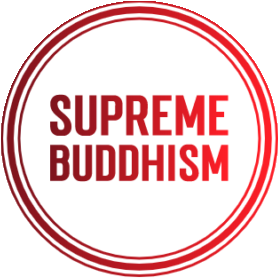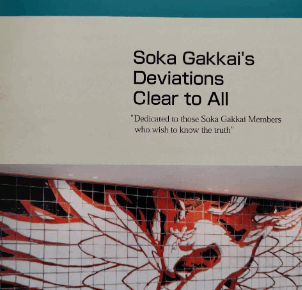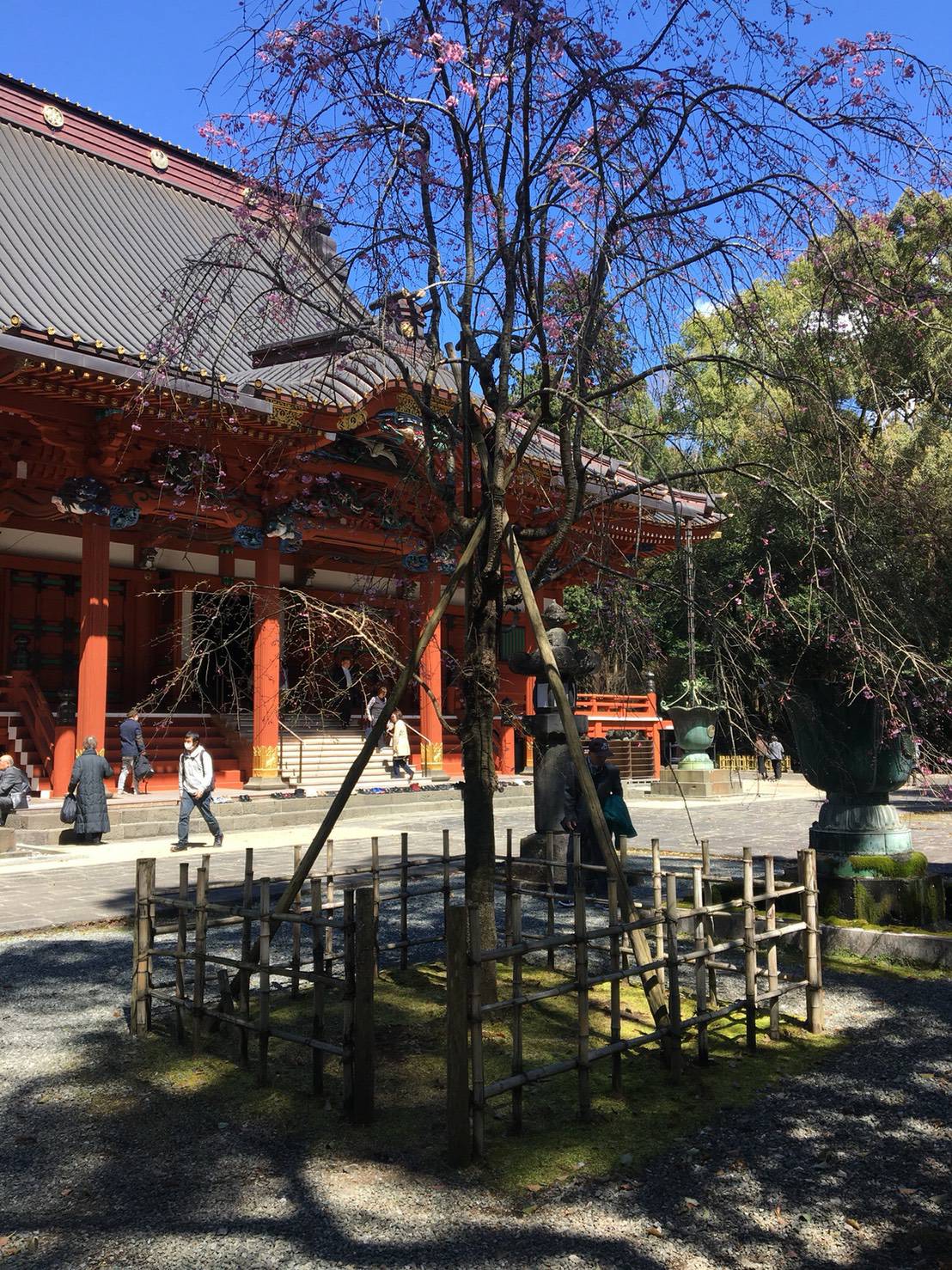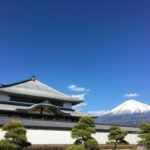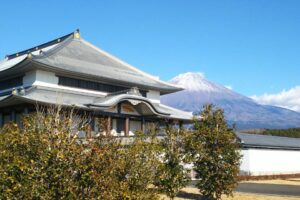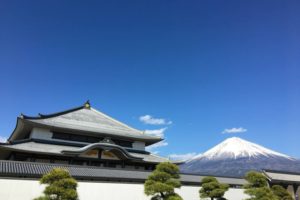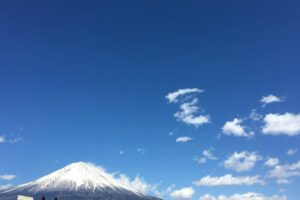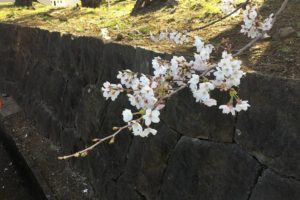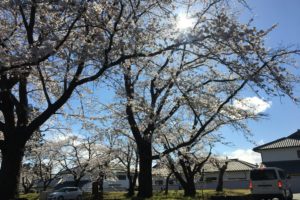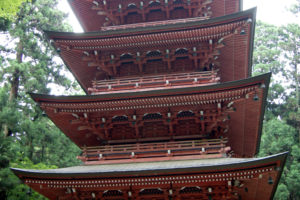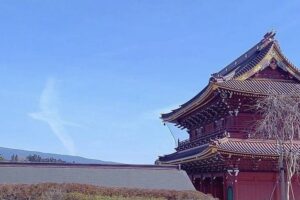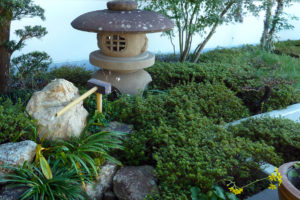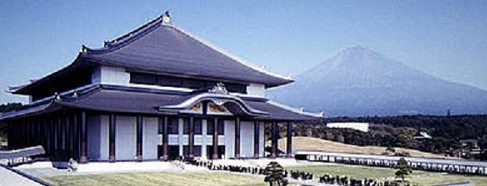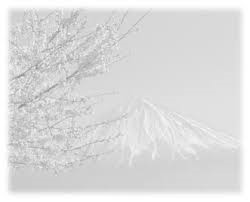The Daimoku of the Honmon Teaching / 本門の題目
The Daimoku of the The Daimoku of the Honmon Teaching means to exert ourselves in the practice of Gongyo, Daimoku and Shakubuku with faith in the Gohonzon of the Honmon Teaching.
On April 28, 1253, the founder Nichiren Daishonin stood at the top of a hill at Kasagamori on Mt.Seicho and solemnly chanted the Daimoku of “Nam-Myoho- Renge-Kyo” for the first time, while greeting the sun that rose beyond the horizon over the Pacific Ocean.
This Daimoku of “Nam-Myoho-Renge-Kyo “is more than a mere title of the Lotus Sutra; it is the essence of the Lotus Sutra. Moreover,it is the Daimoku of the Buddhism of Sowing of the True Cause,the original enlightenment of the true Buddha ,Nichiren Daishonin.
The 26th High Priest Nichikan Shonin in his exegesis, “On The Three Virtues of the Master, Teacher and Parent,” states:
All the disciples of Shakyamuni’s Buddhism of harvest attained the Way during the lifetime of the Buddha or during the Former or Middle Days of the Law.Those living beings born in the Latter Day of the Law, being hommi uzen, have never once been planted the seed of enlightenment nor have they accumulated good causes in their previous lives.For this reason, the Buddha, looking at the distant future, entrusted the five characters of Myoho to Bodhisattva Jogyo; thus planting the seed of Buddhahood to these people for the very first time. (Fuji Shugakuyoshu Vol. 10,p110)
He explains that those (followers of Shakyamuni who heard the Lotus Sutra directly from him) implanted with the seed of Buddhahood (hon’i uzen./ 本已有善 in the infinitely remote past of kuon, were able to accumulate good causes through their practice of Buddhism, and as a result, all attained enlightenment either during Shakyamuni’s lifetime in India or in the next two millennia after his passing, during the Former and the Middle Days of the Law.
In contrast, the living beings in the Latter Day of the Law are people of hommi uzen / 本未有善、which is to say, they have never re-ceived the original seed of Buddhahood in their past existences.No matter how sincerely they believe in the teachings of Shakyamuni’s Buddhism of the harvest, since they do not possess the fundamental seed to begin with, it is impossible for it to sprout.For these individuals without the seed of Buddhahood, they must first be sown with the seed.It is Nichiren Daishonin alone, the True Buddha of the Latter of the Law , who reveals the Daimoku of Nam-Myoho-Renge-Kyo, the original seed of Buddhahood of kuon ganjo, and plants this seed directly to all living beings of Mappo.
Nichiren Daishonin’s Myoho is His Inner Enlightenment originally inherent in His life from time without beginning, the seed of Buddhahood which He alone is endowed to directly plant in the lives of the people of the Latter Day. the doctrine of oneness of kuon ganjo and the Latter Day of the Law,which means that the Daishonin provides the original seed of Buddhahood from kuon to all living beings of Mappo; thus completing the three stages of sowing, maturing and harvesting in this existence, and enabling all to attain Buddhahood.The true substance of this teaching is the principle of actual three thousand realms in a single life-moment hidden in the depths of the Honmon Teaching, and the Daimoku, with the Object of Worship of the Honmon Teaching as its entity.
The attainment of Buddhahood for those of us of the Latter Day is assured when we believe in the Object of Worship of the Honmon Teaching-the objective embodiment of the ‘spirit’ or’soul ‘of the Law of the Daishonin, and when we chant Daimoku of “Nam-Myoho-Renge -Kyo “hidden in the depths of the Juryo chapter.This enables us to achieve kyochi-myogo, the harmonious fusion of oneself with the Gohonzon of” Nam- Myoho-Renge-Kyo.
“Today there are people who earnestly chant this wondrous Nam-Myoho-Renge- Kyo, yet they h ave mistaken their object of worship by praying to statues of Buddhas, and placing faith in false heretical teachings The do not understand or are unable to differenti ate between the Daishonin’s Buddhism of sowing and Shakyamuni’s Buddhism of the harvest.Due to this confusion they end dn worshipping Shakyamuni as Buddha and Nichiren Daishonin as a bodhisattva.Conse- quently, they have contempt for the Gohonzon inscribed by the Daishonin, while they vener- ate statues of Shakyamuni, getting their ob-ject of worship mixed up.There are also people who distort the Daishonin’s True Teaching by denying the transmission of the Lifeblood of the Law entrusted to one and only one person, which ultimately led to the production of their own counterfeit object of worship.Since they are going against the true intent of the Daishonin, no matther how much they chant the same Daimoku, they will not accumulate any merit. Instead they will incur more and more negative causes as the re sult of their slanderous acts.
In the Gosho, Admonitions against Slan der (Soya Dono Gohenji), the Daishonin sternly warns us:
No matter how sincerely one believes in the Lotus Sutra, any violation of its teachings will surely cause him to fall into hell, just as one crab leg will ruin a thousand pots of lacquer.This is the meaning of the passage in the Lotus Sutra, “The poison has penetrated deeply, causing them to lose their true minds.” (Gosho p. 1040 / MW 1, p. 165)
As this passage strictly instructs, although you may think that you have faith in the Lotus Sutra and that you are following the Daishonin’s teachings; however, if you misinterpret even a single phrase of the teachings, or misplace your veneration in the wrong object of worship, or practice erroneous teachings, then not only will you fail to accumulate good fortune, but will be adding more negative causes to fall into hell.
The most important point to remember is that we must sincerely believe in the Gohonzon of the Honmon Teaching-the embodiment of the soul of the Law inscribed by the Daishonin as the True Buddha of the Latter Day, correctly understand the Daishonin’s teachings based upon the true transmission of the Heritage of the Law, chant Daimoku, and furthermore, put Gongyo and Shakubuku into practice.Here lies the true meaning of “Daimoku of the Honmon Teaching.”
There are two aspects to this “Daimoku of the Honmon Teaching. “One is the Daimoku of” faith “and the other being the Daimoku of” practice.
“The” Letter to Horen ” writes:
For if you try to practice the teachings of the sutra without faith, it would be like try- ing to enter a jeweled mountain without
hands (to pick up its treasures), or like trying to make a thousand-mile journey with- out feet. (Gosho p. 814 / MW 7, p. 101)
From the Gosho, “On the True Cause of Original Enlightenment:
“If you earnestly and steadfastly chant Nam-Myoho-Renge-Kyo with unwavering faith, the body of the common mortal, as is, becomes the Buddha-body.This is known as naturally attaining Buddhahood without discarding one’s present form with all the attributes of the Buddha eternally endowed with the three properties (sokushin jobutsu of tenshin dokuro). (Gosho p. 1679)
As the Daishonin expounds, both aspects of Daimoku- “faith” which means to have pure, undivided faith in the Daimoku and “practice” which means to actually carry out the invocation of Daimoku with faith in the Gohonzon are essential. that the Daimoku of “practice” mentioned here does not refer merely to the chanting of Daimoku carried out as one’s own practice.
The Daishonin teaches in “On the Three Great Secret Laws:
” Daimoku contains two meanings; namely, the Former and the Middle Days and the Latter Day of the Law.During the age of the Former Day of the Law, Bodhisattvas Tenjin and Nagarjuna secretly chanted Daimoku, yet they had stopped at revela-tion.Nan-yueh and T’ien-t’ai of the Middle Day of the Law, both chanted Nam- Myoho-Renge-Kyo, but also failed to widely spread [the five characters] to oth-ers, concealing the secret only among themselves.This then is called the the-retical practice of Daimoku . Now in the Latter Day of the Law, the Daimoku invoked by Nichiren has never been revealed; it is the Daimoku of Nam-Myoho- Renge-Kyo which encompasses the two practices of jigyo and keta, for oneself and for others. (Gosho p. 1594)
Paraphrasing this, two thousand years after Shakyamuni entered nirvana, during the ages of the Former and the Middle Days of the Law, it was a time which only required the practice of Daimoku in theory, chanting solely for one’s attainment of Buddhahood.In contrast, the practice most valid for this age of the Latter Day is the practice of jigyo keta, which does not limit us to merely chant for our own individual attainment of Buddhahood, but we must also teach others, widely sharing the teachings with others, chanting together, and we must attain Buddhahood together.
On the occasion of Oeshiki Ceremony conductive last year at the Head Temple, the High Priest Nikken Shonin gave this following instruction:
“At present, all the priests and Hokkeko members of Nichiren Shoshu are striving for Kosen-Rufu in harmonious unity with the priesthood and lay believers working together toward the 750th Anniversary of the Founding of Nichiren Shoshu, chanting the Daimoku of jigyo keta and conducting Shakubuku based on the fundamental spirit of Myoho which is for universal salvation of all living beings.
“The significance of the Daimoku of the Honmon Teaching is revealed in these words by the High Priest Nikken Shonin.
There are only two years left until the 300,000 Believers General Tozan.Let us not begrudge our lives. Anniversary of the Proclamation of True Buddhism in order to repay our great debt of gratitude to the Great Compassion and Profound Mercy of Nichiren Daishonin, the True Buddha of the True Cause of the Latter Day of the Law.
Publisher : Oversea Bureau,Nichiren Shoshu
